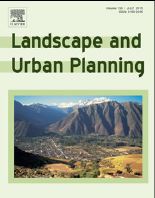A framework for incorporating fine-scale dispersal behaviour into biodiversity conservation planning
Fine-scale landscape features such as scattered trees are increasingly thought to be critical for dispersal, and need to be considered in connectivity modelling and planning. Yet existing modelling approaches struggle to adequately take fine-scale features and threshold dynamics of dispersal behaviour into account, in part because of computational limitations. We present a framework for modelling connectivity at fine spatial resolutions over large spatial extents. Our framework involves a novel approach to characterising fine-scale dispersal behaviour within the context of existing modelling methods, and uses key parameters of dispersal behaviour to link models and their interpretation at multiple scales.
We address computational limitations by creating a gap-crossing threshold layer, which identifies areas where dispersal is possible because of the presence and spacing of fine-scale connectivity elements. This layer is combined with a dispersal-cost layer within a graph-network analysis to identify the optimal least-cost path between patches. Graph metrics are used to assess the importance of specific patches at the regional-scale and to describe connectivity for the whole landscape. A local-scale connectivity model using the Circuitscape software complements the regional analysis outputs by considering all possible pathways across a landscape simultaneously rather than a single least-cost path. The framework was designed specifically to be applied by land use planners who need to quantify the impacts of property development on fine-scale connectivity, yet need to assess implications at the regional scale. We demonstrate the framework by applying it in the Lower Hunter region, Australia.
Publisher: Landscape and Urban Planning
Region: Australia
Type: Research Paper

